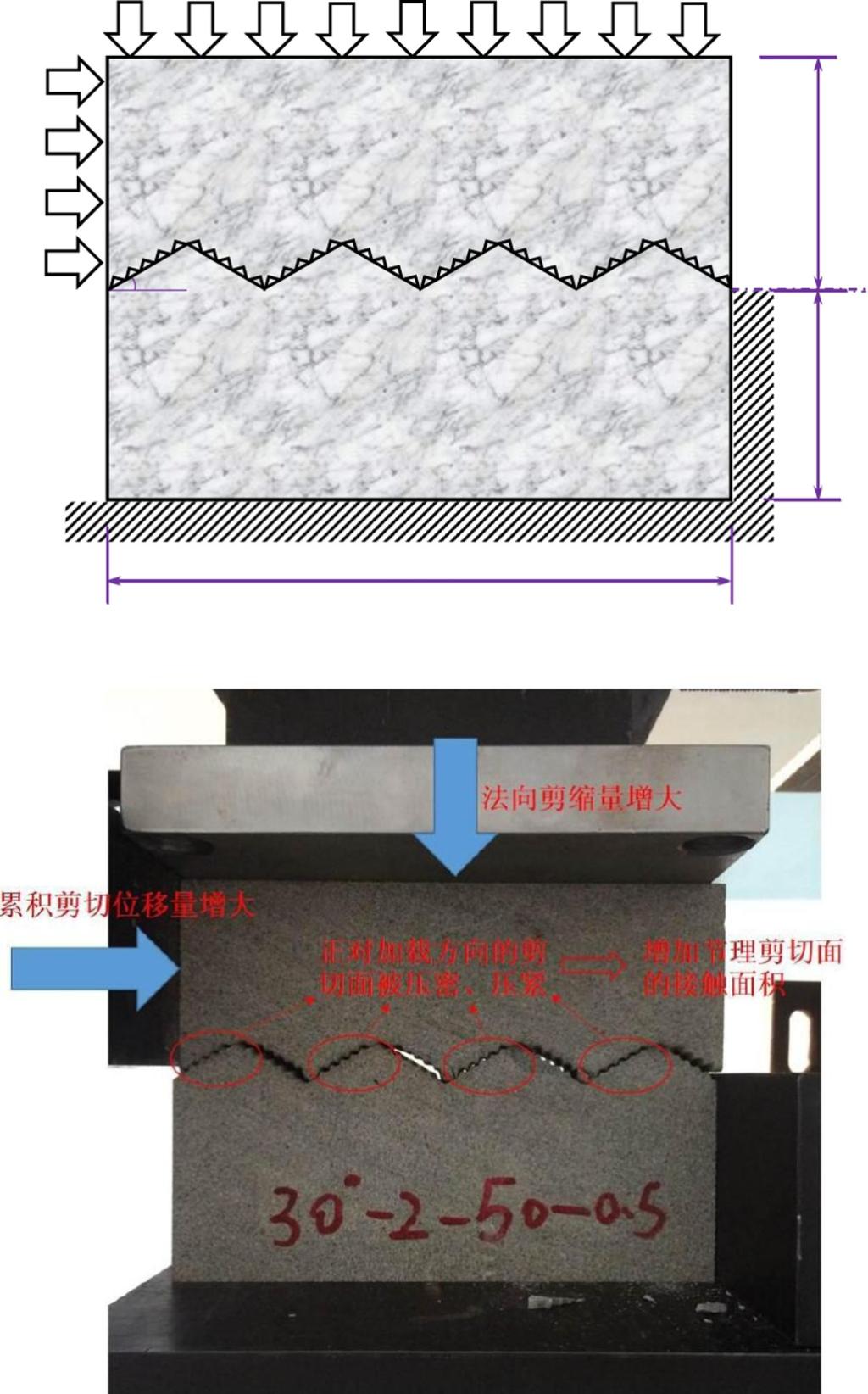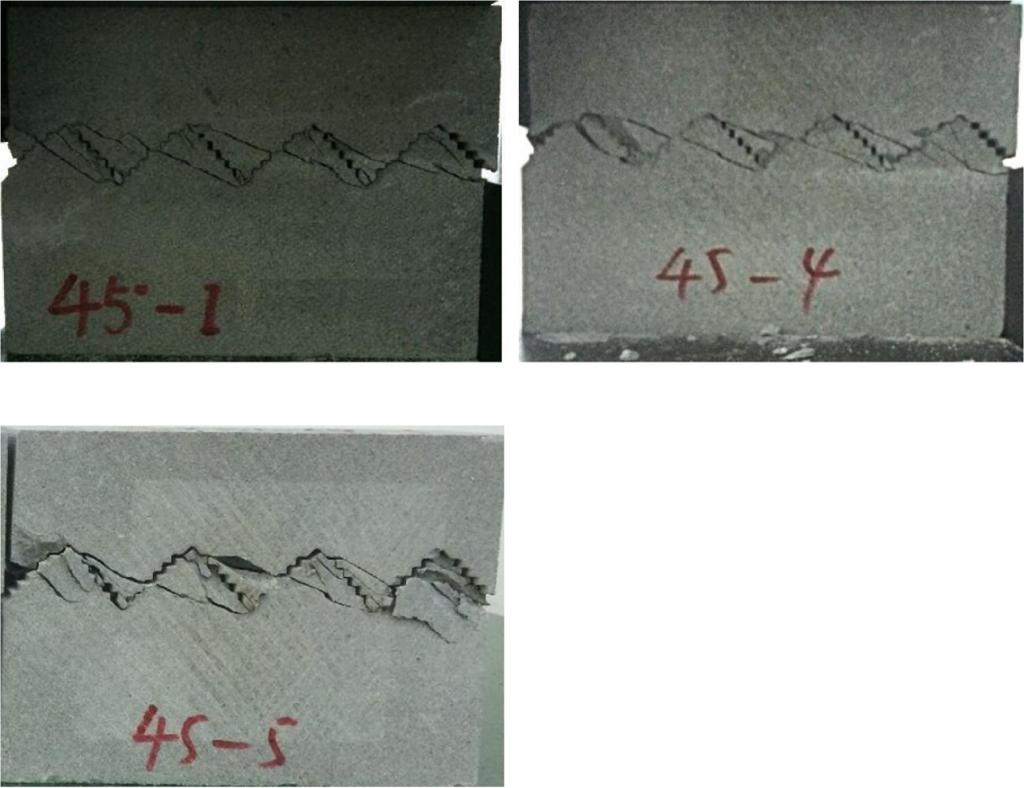Miaomiao Kou, Xinrong Liu, Shangding Tang, et al. Experimental study of the prepeak cyclic shear mechanical behaviors of artificial rock joints with multiscale asperities[J]. Soil Dynamics and Earthquake Engineering, 2019, 120: 58-74.
Keywords: Prepeak cyclic shear tests; Shear mechanical behaviors; Shearing failure modes; Multiscale asperities; Rock joints
High Lights:
Rock joints contain the triangular-shaped primary and subordinated asperities.
Direct and prepeak cyclic shear tests of rock joints with multiscale asperities are conducted.
Influences of geometrical and loading parameters on the mechanical response of rock joints with multiscale asperities are investigated.
Abstract:
The mechanical response of rock joints with multiscale triangular-shaped asperities, including primary and subordinate asperities, when subjected to prepeak cyclic shear loads and static constant normal loads (CNL), is investigated in the laboratory. Three direct shear tests on jointed rock specimens with different initial primary asperity angles, i.e., 15°, 30° and 45°, and the same initial subordinate asperity angle of 45° were first conducted. Three different types of shear failure modes, i.e., climbing failure, mixed climbing-gnawing failure and gnawing failure, were observed. Subsequently, cyclic shear tests on jointed rock specimens were conducted using two consecutive horizontal loading steps: load-controlled and displacement-controlled horizontal shear loading. The cyclic load-controlled horizontal shear loads with amplitudes of 50% and 80% of the maximum direct shear strength were applied to jointed rock specimens for different numbers of cycles. To reach the ultimate failure of the jointed rock specimens, the shear displacement was increased at a constant rate of 0.5 mm/min. In addition, the effects of initial asperity angle, shear cyclic number, shear cyclic amplitude and shear cyclic loading rates on the mechanical response are studied and discussed. It can be found from the experimental results that abrasion failure occurs at the subordinate asperities within a low number of cycles, while fatigue cracks initiate and propagate within a high number of cycles.
Resource:https://www.sciencedirect.com/science/article/pii/S0267726118306730

